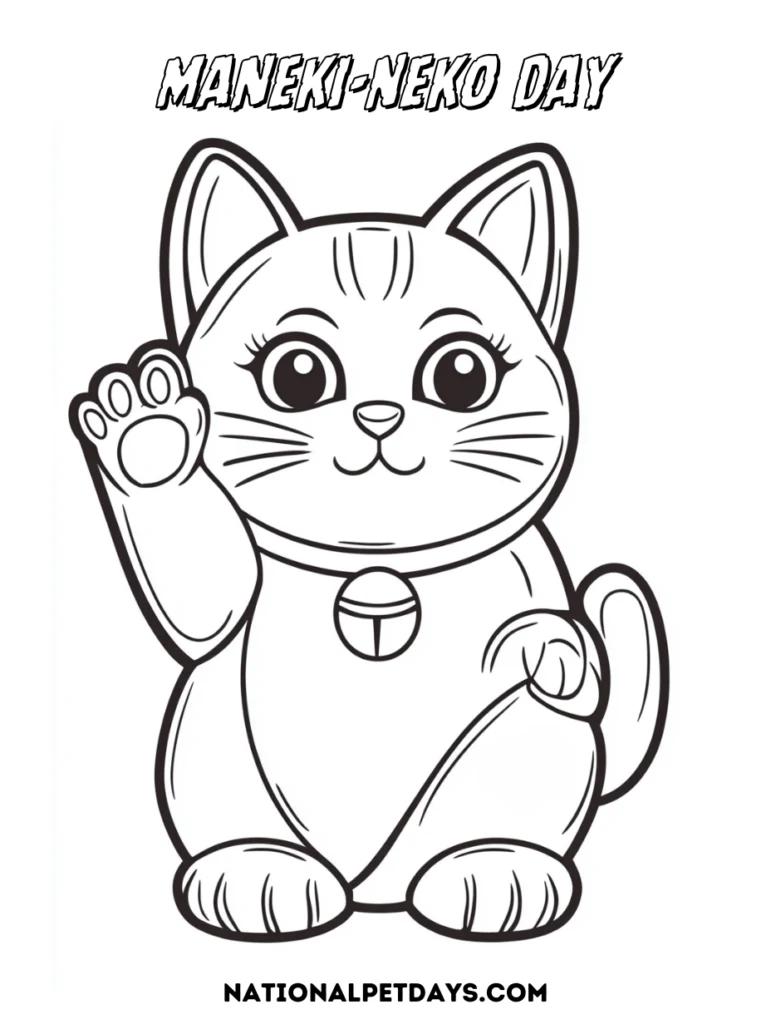Have you ever seen a cat figurine with its paw raised, as if waving hello? That’s a Maneki-Neko, or “beckoning cat,” a popular symbol in Japan believed to bring good luck. There’s even a special day dedicated to this charming figure: Maneki-Neko Day. Here’s everything you need to know about Japan’s Lucky Beckoning Cat.

When is Maneki-Neko Day?
Maneki-Neko Day is celebrated annually on September 29. While the day is primarily observed in Japan, it has started to gain popularity in other parts of the world. For instance, in 2020, San Francisco hosted its first-ever Maneki-Neko Day festival, featuring Japanese cultural performances, food trucks, and vendors selling various Maneki-Neko items.
How Did the Beckoning Cat Tradition Begin?
The origins of the Maneki-Neko are somewhat mysterious, but it’s believed to have started during Japan’s Edo period (1603-1868).
Among the many stories surrounding the Maneki-Neko, one of the most popular is the legend of Tama, the lucky cat associated with a wealthy lord named Tokugawa Ieyasu.
According to the legend, Ieyasu sought refuge from a storm under a tree when he noticed Tama, a cat, beckoning him into a nearby temple. He followed the cat, and moments later, a lightning bolt struck the tree he had been standing under. Ieyasu credited Tama with saving his life, believing the cat brought him great luck and fortune. As a result, Tama became known as the “beckoning cat of good fortune,” and Maneki-Neko figures became popular symbols of luck, often displayed in shops and restaurants.
In addition to being a good luck charm, the Maneki-Neko is also seen as a symbol of obedience and loyalty, reflecting the traditional Japanese view of cats as clean and positive creatures. Today, the Maneki-Neko remains a beloved figure in Japan and around the world.
Which Paw Does the Beckoning Cat Raise?
While the Maneki-Neko is typically shown with one paw raised, it’s not always the same paw!
- Left Paw Raised: It is commonly believed that a Maneki-Neko with its left paw raised is beckoning customers into a shop, symbolizing prosperity in business.
- Right Paw Raised: A Maneki-Neko with its right paw raised is thought to bring financial success, as the raised paw symbolizes an abundance of money. Some also believe that the right paw brings good health or luck in love, as the Japanese word for “right” can also mean “love.”
It’s also said that the higher the paw is raised, the greater the luck that will be bestowed, making the Maneki-Neko a powerful symbol of good fortune.
What Do the Different Beckoning Cat Colors Mean?
While the traditional Maneki-Neko is a white cat with black and red spots, these lucky figures come in various colors, each with its own special meaning:
- White: Symbolizes purity and good fortune.
- Red: Brings good luck in love, relationships, and health.
- Green: Associated with academic success.
- Pink: Brings romance and love.
- Gold: Beckons wealth and prosperity.
- Black: Protects against evil forces.
No matter the color or which paw is raised, the Maneki-Neko is a cherished symbol of good luck, bringing positive vibes to homes, businesses, and hearts around the world.
